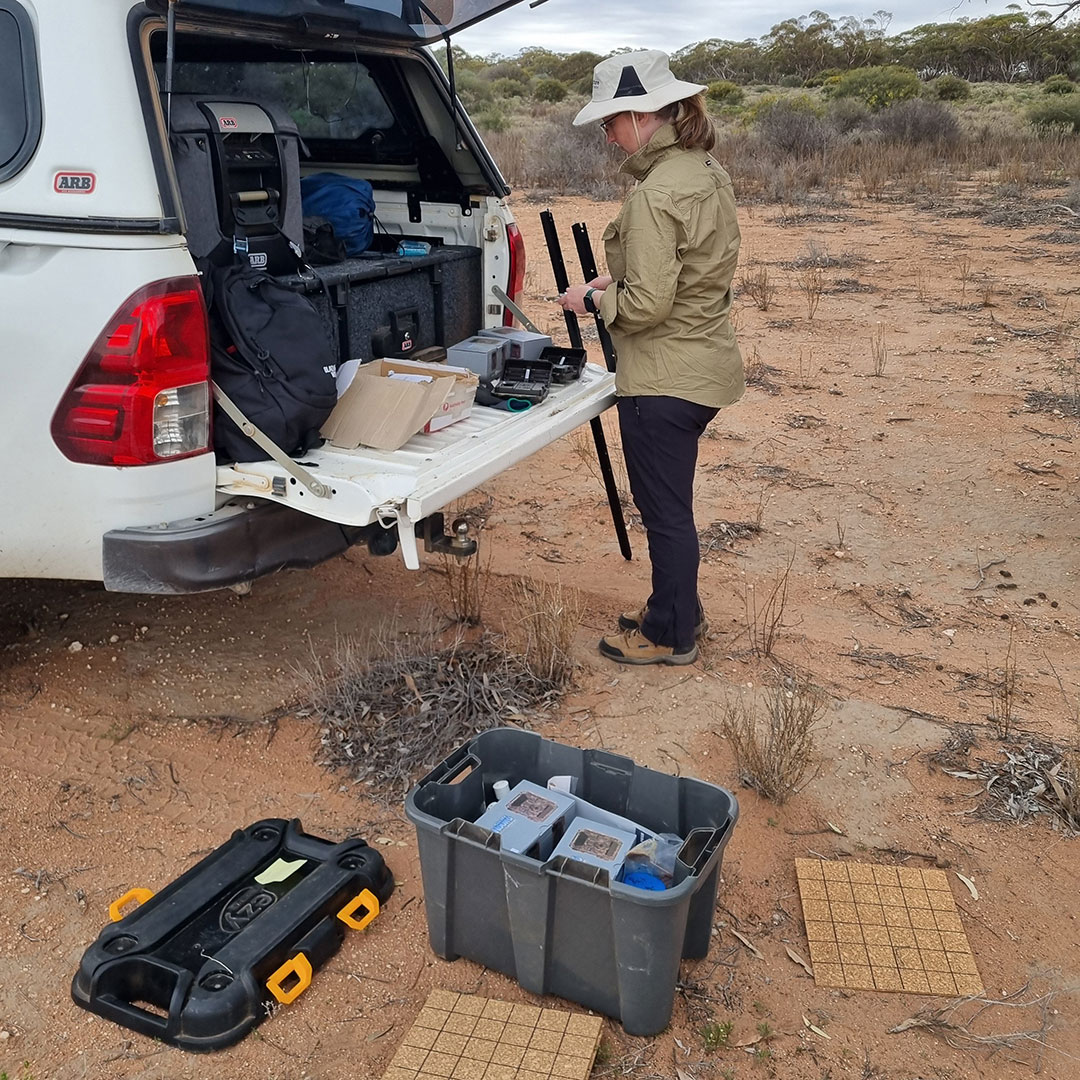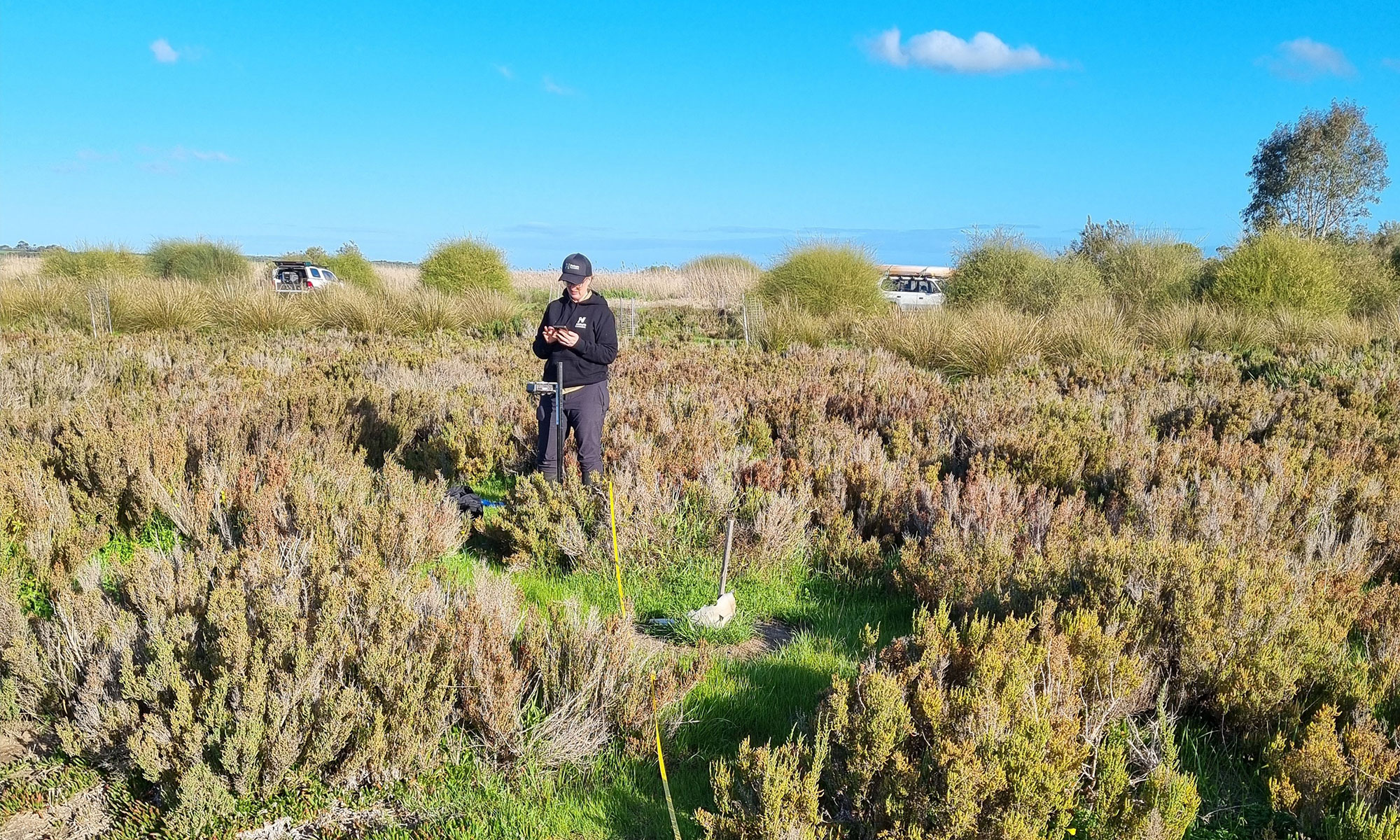Our Science & Knowledge and Reserve Management teams have had a busy start to spring, getting out across the nature reserves to set up new standardised survey monitoring sites.
A key aspect of the new 2025-2030 Science Strategy is the establishment of the Nature Foundation Biodiversity Monitoring Program, which consists of standardised surveys of vegetation, birds, reptiles, and mammals implemented across all Nature Foundation reserves each autumn and spring, combined with targeted, appropriately timed, species-specific surveys to capture important information on key threatened species.
 This process involves determining a range of sites across each reserve to give a good spread of data, as well as cover various habitat and ecosystem types, which exist across the larger nature reserves. These sites then each have remote cameras set up, along with tiles to assist with reptile surveys. Vegetation and bird surveys undertaken in these areas build a wholistic picture of the area.
This process involves determining a range of sites across each reserve to give a good spread of data, as well as cover various habitat and ecosystem types, which exist across the larger nature reserves. These sites then each have remote cameras set up, along with tiles to assist with reptile surveys. Vegetation and bird surveys undertaken in these areas build a wholistic picture of the area.
All data is recorded in our integrated data management system, and ensures that we can seamlessly capture, process, analyse, and display all information required to meet the Foundation's strategic goals in a standardised manner across the organisation and nature reserve network, ensuring that resources are used most effectively to maximise positive outcomes for biodiversity.
We look forward to sharing findings and outcomes from these surveys.

Photos by Kelsey Bennett at Murbpook and Watchalunga Nature Reserves.